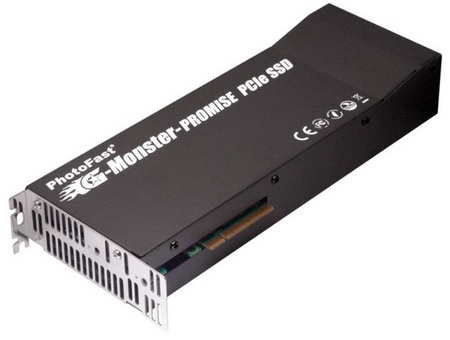ErikStenger
Registered User
- Joined
- Mar 12, 2008
- Messages
- 5,925
- Age
- 43
OCZ Technology first introduced the new Z-Drive PCI-Express SSD at the CeBIT 2009 expo held in Germany this past February, representing the company's latest premium solid state storage solution using the highly-fast PCI-Express interface (x4). The Z-Drive offers an onboard RAID controller, 256 MB of onboard cache, comes in three different capacities, and a MTBF of at least 1.5 million hours. The Z-Drive is also compatible with a wide range of operating systems including Windows XP (32 and 64), Windows 7 (32 and 64), and even Mac OS X 10.
“It is our goal to deliver tailored SSD solutions for the complete spectrum of high performance applications,†said Eugene Chang, Vice President of Product Management at the OCZ Technology Group. “Designed for ultra high performance consumers, the Z-Drive takes the SATA bottleneck out of the equation by employing the ultra fast PCI-Express architecture with a RAID controller and four Vertex controllers configured in four-way RAID 0 within an all-in-one product, making this solution ideal for applications that put a premium on both storage performance and maximum capacity.â€ÂÂ
The Z-Drive's three capacity offerings include 250 GB, 500 GB, and 1 TB. The 250 GB version offers reads speeds up to 450 MB/s, write speeds up to 300 MB/s, and a sustained write speed up to 200 MB/s. The 500 GB version is the fastest SSD of the bunch, providing read speeds up to 510 MB/s, and write speeds up to 480 MB/s; it too also has sustained write speeds up to 200 MB. As for the 1 TB version, its read speed is a bit slower, accessing data up to 500 MB/s. It also sports write speeds up to 470 MB/s, and a 200 MB/s sustained write speed as well. The overall dimensions of all three Z-Drive versions are 245mm x 124mm x 22mm, although the drive looks thick enough to take up two slots. There's also a fan on the bottom of the SSD to keep things nice and cool.
"Z-Drives feature exceptional speeds all while delivering lowered power consumption, ultra-fast data access, superior durability, and lower cost per ownership compared to conventional hard drives when factoring in the need for multiple drives and a separate RAID controller," the company said.
Although consumers can purchase OCZ products through online retailers including Tiger Direct, Newegg, eCost, CompUSA, and more, the Z-Drive was not available for purchase at the time of this writing. However, the OCZ Vertex Series 120 GB SSD for the SATA II interface costs around $370 USD, so it may be safe to assume that the 250 GB version of the Z-Drive PCI-Express SSD may be a bit higher in price. Still, with the super fast performance provided by the PCI-e interface and SSD technology, the price may very well be worth it.

“It is our goal to deliver tailored SSD solutions for the complete spectrum of high performance applications,†said Eugene Chang, Vice President of Product Management at the OCZ Technology Group. “Designed for ultra high performance consumers, the Z-Drive takes the SATA bottleneck out of the equation by employing the ultra fast PCI-Express architecture with a RAID controller and four Vertex controllers configured in four-way RAID 0 within an all-in-one product, making this solution ideal for applications that put a premium on both storage performance and maximum capacity.â€ÂÂ
The Z-Drive's three capacity offerings include 250 GB, 500 GB, and 1 TB. The 250 GB version offers reads speeds up to 450 MB/s, write speeds up to 300 MB/s, and a sustained write speed up to 200 MB/s. The 500 GB version is the fastest SSD of the bunch, providing read speeds up to 510 MB/s, and write speeds up to 480 MB/s; it too also has sustained write speeds up to 200 MB. As for the 1 TB version, its read speed is a bit slower, accessing data up to 500 MB/s. It also sports write speeds up to 470 MB/s, and a 200 MB/s sustained write speed as well. The overall dimensions of all three Z-Drive versions are 245mm x 124mm x 22mm, although the drive looks thick enough to take up two slots. There's also a fan on the bottom of the SSD to keep things nice and cool.
"Z-Drives feature exceptional speeds all while delivering lowered power consumption, ultra-fast data access, superior durability, and lower cost per ownership compared to conventional hard drives when factoring in the need for multiple drives and a separate RAID controller," the company said.
Although consumers can purchase OCZ products through online retailers including Tiger Direct, Newegg, eCost, CompUSA, and more, the Z-Drive was not available for purchase at the time of this writing. However, the OCZ Vertex Series 120 GB SSD for the SATA II interface costs around $370 USD, so it may be safe to assume that the 250 GB version of the Z-Drive PCI-Express SSD may be a bit higher in price. Still, with the super fast performance provided by the PCI-e interface and SSD technology, the price may very well be worth it.



